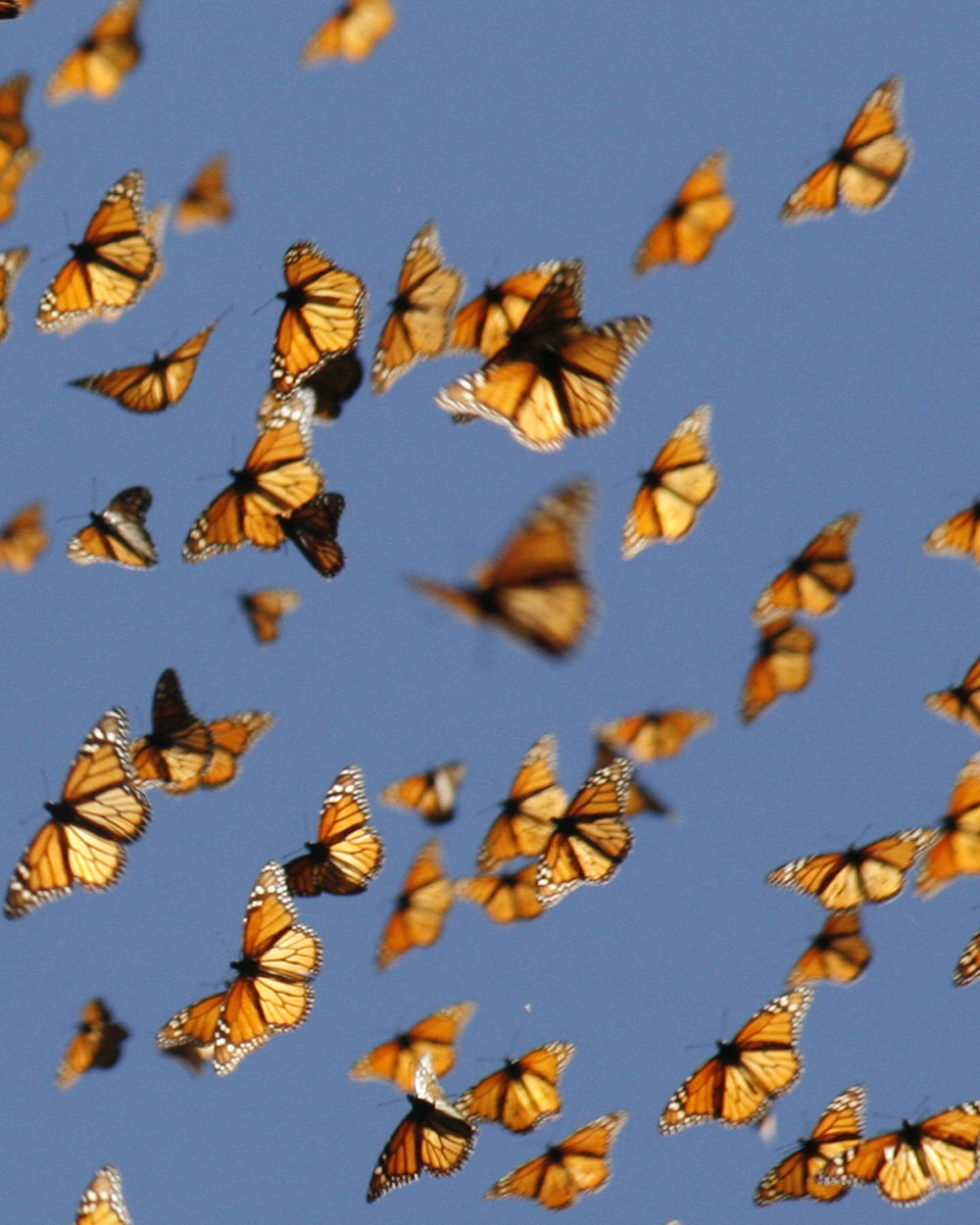Is It the End for the Monarch's Cross-Continent Migration? (Op-Ed)


Sylvia Fallon is a senior scientist for the NRDC. This Op-Ed was adapted from a post to the NRDC blog Switchboard. Fallon contributed this article to Live Science's Expert Voices: Op-Ed & Insights.
I was sitting in the tattoo shop getting inked for my first and (so far) only time with a design I had thought long and hard about, when the tattoo artist received a call from a friend who asked him what kind of tattoo he was currently working on.
"Oh, just a butterfly," he said dismissively. I just smiled to myself, because unlike him, I knew that this wasn't just any butterfly — it was a monarch butterfly.
Yes, it is beautiful, but it's so much more than that. It's a complex product of evolution that packs a powerful combination of delicate beauty and poisonous self-defense. Its bright colors send a message to potential predators warning them of the danger they'll find within. It carries this protection with it as it traverses the entire country from the forests of Mexico to the wildflowers of Texas through the prairies of the Midwest and back again. With each flapping of its wings it sends the message, "I am vibrant, I am powerful — and I am free."
Or at least, this is what the monarch means to me — which is why it is so heartbreaking to hear that the number of monarch butterflies that migrate across the United States each year and overwinter in the forests of Mexico has dropped to an all-time low. News out of Mexico puts the population at 33.5 million individuals. Although the number of butterflies varies from year to year, this estimate is a precipitous drop from a high of 1 billion in 1997 and down from a long-term average of 350 million over the last 15 years. Furthermore, it represents the 9th consecutive yearly measurement below the long-term average. In other words, this year's news follows a continuing downward trend. It signals a species in crisis.
The decline of monarch butterflies over the last decade or more has coincided with the wide-scale adoption of genetically modified crops that are resistant to the weed-killer glyphosate, also known as Round Up. This change in our agricultural system has led to the near extermination of milkweed from huge swaths of our country. The problem is that monarch butterflies are dependent on milkweed. It's the only type of plant that they use for laying their eggs.
Since the introduction of genetically modified "Round Up Ready" corn and soybeans in the late 1990s, their adoption level has reached as high as 70 to 90 percent. As a result, the use of glyphosate in these crop fields skyrocketed. Scientists now estimate that in the span of about 10 years (from 1999-2010) there has been a 60 percent decline in milkweeds across the Midwest (in both agricultural and non-agricultural areas) and an 80 percent decline in monarchs in the Midwest. Past studies have shown that monarchs from the Midwest comprise 50 percent of the overwintering population in Mexico. This explains why the loss of butterflies from a specific region could have such a large impact on the overall population size.
Get the world’s most fascinating discoveries delivered straight to your inbox.
There are, of course, other contributors to the monarch's decline. Drought, particularly in Texas, is believed to also be posing a threat to these butterflies as they try to make their way from Mexico across the United States to Southern Canada and back in the span of a year. Climate in general (including drought, but also extreme temperatures) is contributing. And deforestation of the butterflies' wintering habitat continues to be a concern.
However, given that the widespread adoption of "Round Up Ready" crops has largely eliminated the monarch's most essential "habitat" by removing milkweeds from the landscape, it's time to reconsider whether its continued large-scale use makes sense. Today's news reminds us just what is at stake.
Besides its beautiful appearance and usefulness as a pollinator, the monarch's long-distance round-trip journey is a unique phenomenon that scientists still don't fully understand. If we continue blindly along the current path, ignoring the unintended consequences of our actions, we risk losing the monarch's migration — one of the true natural wonders of our planet. So much more than 'just a butterfly.'
This Op-Ed was adapted from "Monarch butterfly population hits a new low" on the NRDC blog Switchboard. The views expressed are those of the author and do not necessarily reflect the views of the publisher. This version of the article was originally published on Live Science.



